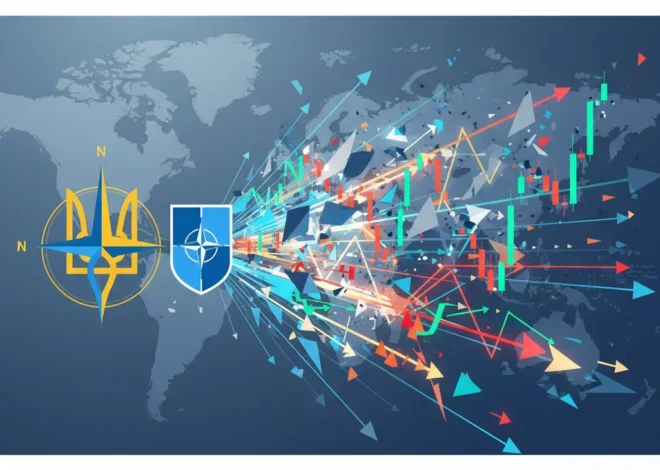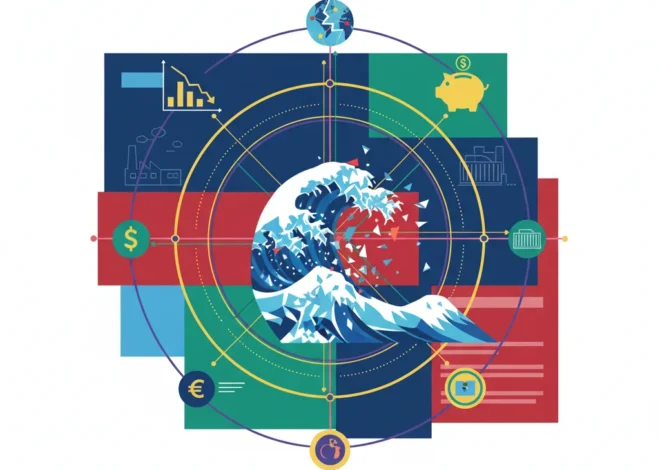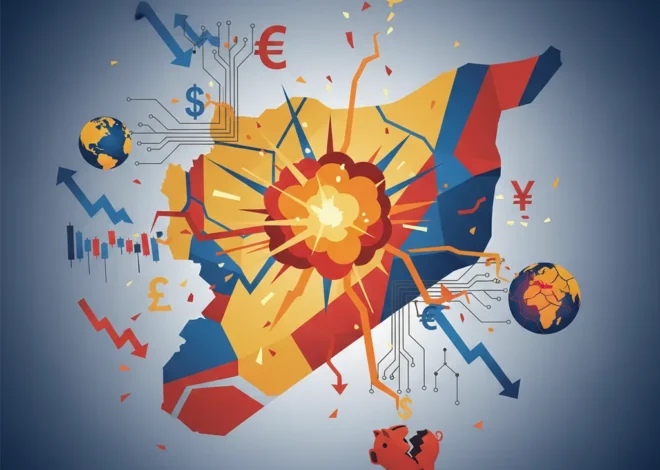
The Art of the Trade War: How a Fentanyl Tariff Offer Rocked Global Economics
In the high-stakes theater of international diplomacy, every word is a calculated move, every gesture a potential signal. Few leaders have understood the power of this political stage better than former U.S. President Donald Trump. During a pivotal moment in the U.S.-China trade war, while in South Korea for critical talks on trade and security, he made a statement that sent ripples through the worlds of geopolitics and finance alike: a proposal to cut tariffs on fentanyl from China. This announcement, made just ahead of a highly anticipated summit with Chinese President Xi Jinping, was far more than a simple policy adjustment; it was a masterclass in geopolitical negotiation, revealing the intricate dance between economic pressure, national security, and public health crises.
On the surface, the offer seemed counterintuitive. The United States was grappling with a devastating opioid epidemic, with fentanyl—a synthetic opioid 50 to 100 times more potent than morphine—at its epicenter. A significant portion of the illicit fentanyl and its chemical precursors were known to originate in China. Why, then, would a U.S. president, known for his “America First” and tough-on-China stance, offer a concession on this very issue? The answer lies not in public health policy alone, but in the complex, multi-layered game of international relations where economic leverage is the ultimate currency.
The Geopolitical Chessboard: A Carrot Amidst the Sticks
To understand the significance of this move, one must recall the context. The statement was made during a period of intense economic friction between the world’s two largest economies. The Trump administration had imposed sweeping tariffs on hundreds of billions of dollars worth of Chinese goods, and Beijing had retaliated in kind. This trade war was disrupting supply chains, rattling the stock market, and creating immense uncertainty for global investing. The talks in South Korea and the upcoming summit with Xi were seen as a crucial opportunity to de-escalate tensions.
Trump’s fentanyl tariff offer can be interpreted as a strategic “carrot” dangled before President Xi—a gesture of goodwill designed to break the diplomatic impasse. By offering a concession on a matter of humanitarian importance, the U.S. was signaling a willingness to negotiate, potentially in exchange for Chinese concessions on core U.S. demands, such as intellectual property protection, forced technology transfer, and reducing the trade deficit. It was a classic negotiating tactic: create an opening on a secondary front to achieve a breakthrough on the primary one. According to reports from the time, the President was in South Korea specifically for “talks on trade and security” ahead of the G20 summit where he would meet Xi, highlighting the interconnectedness of these issues.
This maneuver underscores a fundamental principle of modern economics and foreign policy: trade and security are inextricably linked. A stable economic relationship can foster security cooperation, while security tensions can easily derail trade. By linking a tariff reduction to the broader dialogue, the administration was attempting to reframe the negotiation, moving it beyond a zero-sum game of economic penalties.
UK's New Tax Gauntlet: Are High-Earning Professionals in the Crosshairs?
The Economic Undercurrents of a Public Health Crisis
While the geopolitical angle is compelling, the underlying economy of the fentanyl crisis itself is crucial to the story. The application of tariffs on fentanyl and its precursors was an attempt to use economic tools to solve a non-traditional problem. The theory was simple: by making it more expensive for Chinese manufacturers to produce and export these chemicals, the U.S. could disrupt the supply chain and reduce the flow of the deadly drug onto American streets.
However, the economics of illicit markets are notoriously resistant to conventional pressures. Here’s a breakdown of the potential impacts of such tariff policies:
| Tariff Policy Approach | Potential Economic & Market Impact |
|---|---|
| Tariff Escalation (The “Stick”) | Could increase costs for Chinese chemical producers, potentially disrupting some supply lines. However, it might also drive production to other unregulated markets or simply be absorbed as a cost of business by highly profitable criminal enterprises. It adds to overall trade tensions, creating negative sentiment in the stock market. |
| Tariff Reduction (The “Carrot”) | On its own, this could theoretically lower costs for illicit producers. However, when offered as a quid pro quo for increased enforcement and cooperation from Beijing, it becomes a powerful incentive. A successful deal could be viewed positively by markets as a sign of de-escalation, boosting investor confidence. |
The move to potentially cut tariffs was therefore a tacit admission that the “stick” approach alone might be insufficient. True progress required active cooperation from the Chinese government to crack down on illicit producers within their borders. By offering an economic incentive, the U.S. was attempting to buy that cooperation. This highlights a nuanced point in international economics: sometimes, strategic concessions can yield greater returns than punitive measures, especially when dealing with complex, non-state actors that operate in the shadows of the formal economy.
The global fight against illicit substances has increasingly drawn in the world of banking and financial technology. The immense profits from the fentanyl trade must be laundered, a process that often involves exploiting vulnerabilities in the international financial system. This is where the conversation expands to include the role of fintech and even blockchain.
Up in Smoke: Why Big Tobacco's Indonesian Fortress is Starting to Crack
Fintech and Blockchain: The Next Frontier in a Shadow War
Combating the financial flows of the drug trade is as critical as stopping the physical supply. The same statement about tariffs implicitly touches upon the need for deeper cooperation in financial oversight. Modern international criminal organizations are sophisticated users of financial technology to move money across borders with speed and anonymity.
Here’s how this financial battleground is evolving:
- Enhanced Banking Compliance: Regulatory bodies worldwide are pressuring banks to adopt more sophisticated Anti-Money Laundering (AML) and Know Your Customer (KYC) protocols. AI-powered fintech solutions are becoming essential for monitoring millions of transactions in real-time to flag suspicious activity linked to drug trafficking. A major diplomatic breakthrough, like the one hinted at by Trump, often includes agreements for enhanced data sharing between national financial intelligence units (source).
- The Role of Blockchain: The blockchain presents a dual-use technology in this context. On one hand, cryptocurrencies can be exploited by criminals for anonymous transactions. On the other, the immutable and transparent nature of blockchain ledgers offers a revolutionary tool for supply chain management. Imagine a future where precursor chemicals are tracked from factory to delivery on a secure blockchain, making diversion into illicit channels nearly impossible. This represents a long-term technological solution that complements short-term diplomatic and economic policies.
Therefore, a seemingly simple tariff discussion is a gateway to a much larger conversation about the future of global banking, regulation, and the deployment of cutting-edge fintech to protect the integrity of the financial system. For investors, the growth of the “RegTech” (Regulatory Technology) sector is a direct consequence of these global challenges.
Implications for Investors and the Global Economy
For business leaders, finance professionals, and investors, the key takeaway is the profound impact of geopolitics on market stability. The U.S.-China relationship remains the single most important variable in the global economy. A single statement can cause market indices to swing, commodity prices to fluctuate, and currencies to revalue. The fentanyl tariff offer was a microcosm of this reality.
Investors must learn to navigate an environment where headline risk is paramount. A diversified portfolio and a strategy that accounts for sudden geopolitical shifts are no longer optional—they are essential for survival. The event served as a powerful reminder that the interconnectedness of our world means a public health crisis in one country, a manufacturing policy in another, and a diplomatic summit on a third continent can converge to directly impact your investment portfolio (source). The era of predictable, fundamentals-only investing is being challenged by a new paradigm of politically-driven market dynamics.
Sequoia's Breaking Point: When Partner Politics Trigger a C-Suite Resignation
In conclusion, President Trump’s offer to cut fentanyl tariffs was not a footnote in the trade war saga; it was a chapter in itself. It demonstrated the use of economic policy as a multi-purpose tool for diplomatic leverage, a gambit to address a public health emergency, and an event that sent clear signals to the financial markets. It wove together threads of international trade, global security, public health, and the future of financial technology. For anyone involved in the global economy, it stands as a powerful case study in how the art of the deal is played on the world stage, where the stakes are high, the moves are complex, and the consequences ripple across every sector of society.


